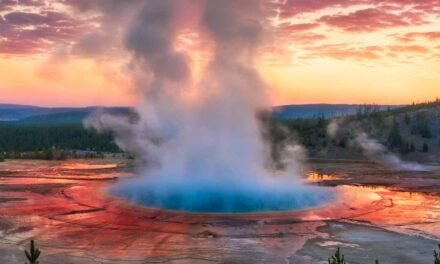Introduction:
Theodore Roosevelt National Park, located in western North Dakota, offers a diverse range of weather conditions throughout the year. This visitor’s guide will take you through the unique weather patterns experienced during each season, providing valuable insights on what to expect, various activities, wildlife sightings, and any seasonal closures or reduced operating hours. Knowing what to expect will help you prepare for a fantastic visit to this remarkable national park.
Winter Weather in Theodore Roosevelt National Park
Winter in Theodore Roosevelt National Park can be quite cold and challenging. From December to February, temperatures often hover below freezing, with daytime highs reaching around 20-30°F (-6 to -1°C) and nighttime lows dipping to single digits or even below zero (-17°C). Snowfall is common, with an average annual accumulation of 30 inches (76 cm). Winter storms can occur, causing temporary road closures and hazardous conditions.
Despite the cold and snow, there are plenty of winter activities for visitors to enjoy. Snowshoeing and cross-country skiing offer opportunities to explore the park’s beautiful snow-covered landscape. Wildlife watching is also popular, as many species remain active throughout the winter. Bison, mule deer, and coyotes are some of the animals you might encounter. Due to the harsh winter conditions, camping is not recommended during this season.
The visitor center’s operating hours may be reduced during the winter months, so it’s a good idea to check their website or call ahead for current information.
Spring Weather in Theodore Roosevelt National Park
As winter gives way to spring, the park begins to transform. From March to May, temperatures gradually increase, with daytime highs reaching the 50s and 60s (10-20°C) and nighttime lows in the 30s and 40s (0-10°C). Rainfall becomes more common during this time, and melting snow can create muddy trails and temporary road closures.
Spring is a time of rebirth in the park. Wildflowers start to bloom, and migratory birds return, filling the air with their songs. Wildlife, such as elk and white-tailed deer, becomes more active, and young animals may be spotted throughout the park. Spring is also a great time for hiking and horseback riding, although some trails may be muddy or closed due to high water levels.
Camping options begin to open up in the spring, but always check the park’s website for current conditions and available facilities. Be prepared for rapidly changing weather conditions, as spring storms can bring snow, rain, or hail with little warning.
Summer Weather in Theodore Roosevelt National Park
Summertime brings warm and pleasant weather to Theodore Roosevelt National Park, with temperatures generally ranging from the 70s to 90s (20-32°C) during the day and cooling down to the 50s and 60s (10-20°C) at night. While summer is the driest season, occasional thunderstorms can occur, sometimes bringing strong winds and hail.
With its mild weather, summer is the most popular season for visiting the park. Hiking, wildlife watching, and stargazing are all popular activities during this time. Wildlife sightings may include prairie dogs, bighorn sheep, and wild horses. Keep an eye out for the park’s resident bison herds, which are often seen grazing in the open grasslands.
Summer is also the best season for camping, with all campgrounds open and facilities available. Reservations are highly recommended due to the increased visitation during this time. Be aware that summer heat can bring an increased risk of wildfires, so always follow fire restrictions and guidelines.
Fall Weather in Theodore Roosevelt National Park
Fall is a beautiful and often overlooked time to visit Theodore Roosevelt National Park. From September to November, temperatures begin to cool down, with daytime highs ranging from the 50s to 70s (10-21°C) and nighttime lows dipping into the 30s and 40s (0-10°C). Rainfall increases during the fall, and early snowstorms are not uncommon in late October and November.
The park’s stunning fall foliage offers a breathtaking backdrop for hiking, wildlife watching, and photography. Wildlife is particularly active during this season, as animals prepare for the upcoming winter. You may have a chance to see elk bugling, bison in their winter coats, and migratory birds passing through.
Camping in the fall can be a more peaceful experience compared to the busy summer season. However, as temperatures drop and the risk of snow increases, be prepared for changing conditions and check the park’s website for current campground availability and facility closures.
Conclusion:
Theodore Roosevelt National Park offers a diverse range of weather conditions and experiences throughout the year. From the cold and snowy winter to the warm and inviting summer, each season provides unique opportunities for adventure and exploration. Understanding the park’s seasonal weather patterns will help you plan the perfect trip, whether you’re interested in hiking, wildlife watching, or simply enjoying the natural beauty of this incredible landscape. No matter when you choose to visit, Theodore Roosevelt National Park is sure to leave you with lasting memories and a deep appreciation for the American outdoors.


